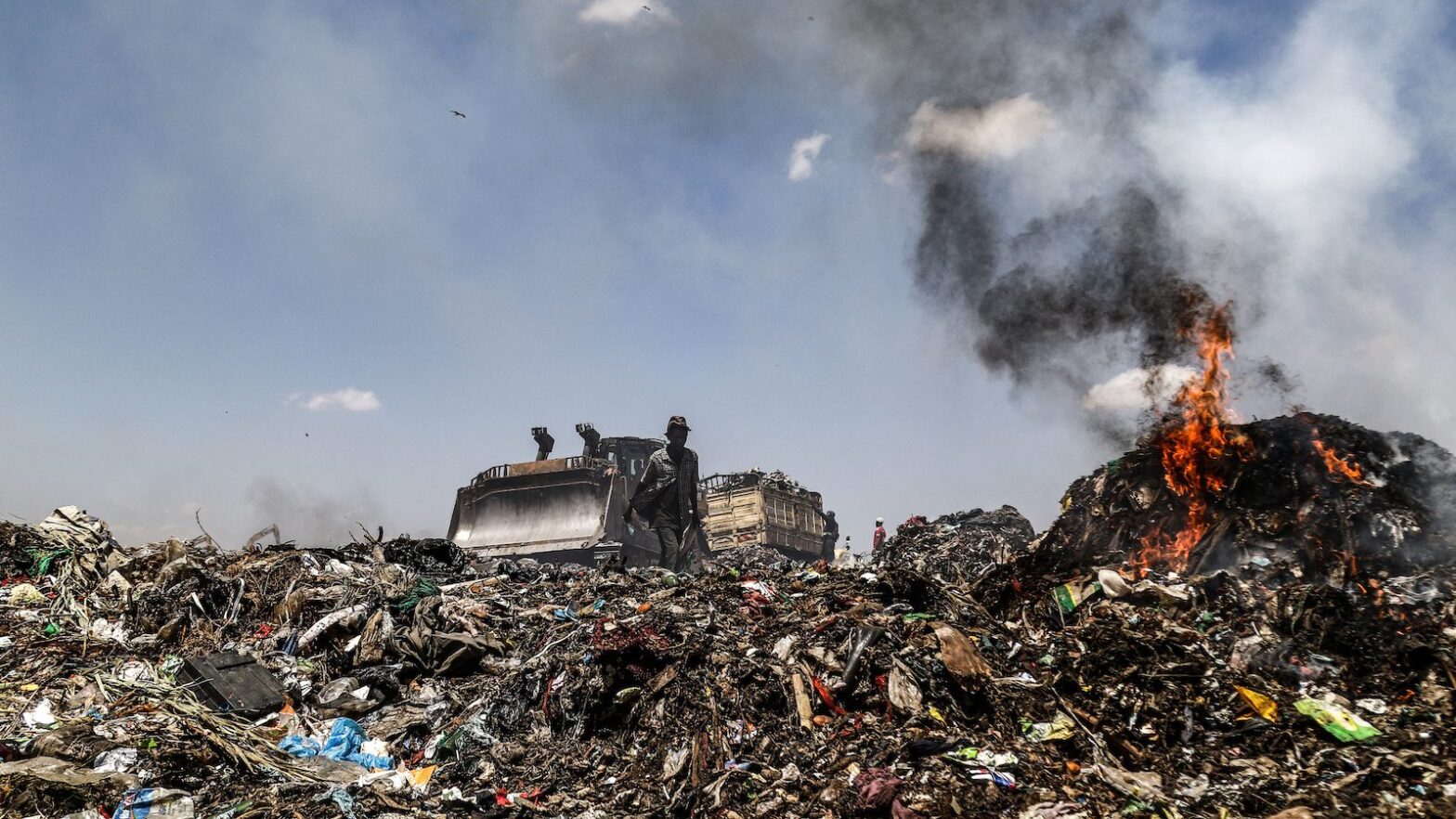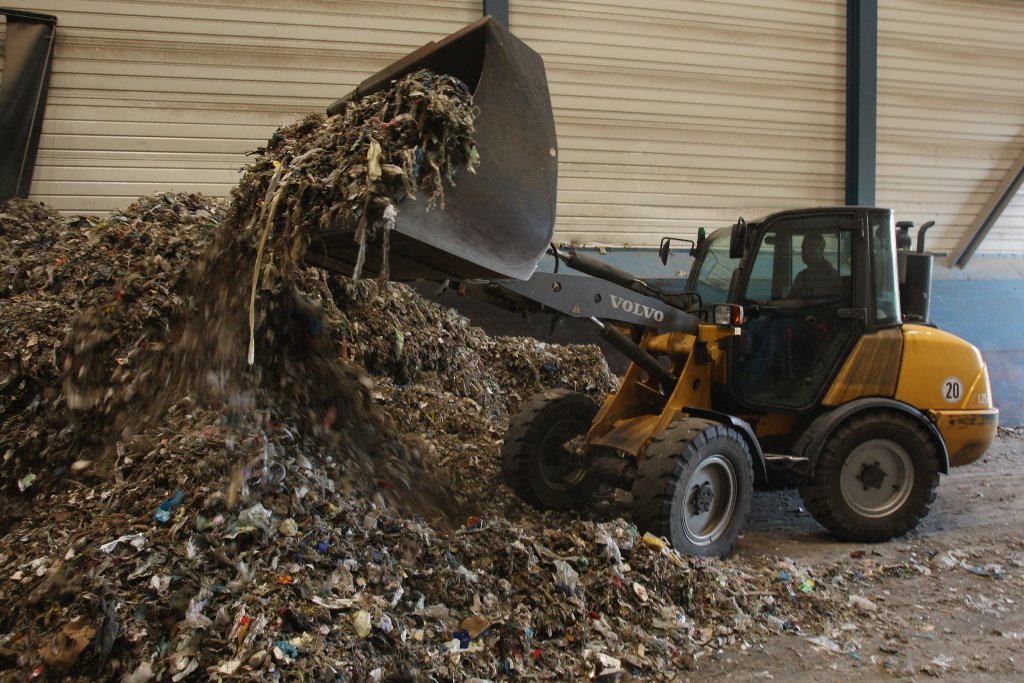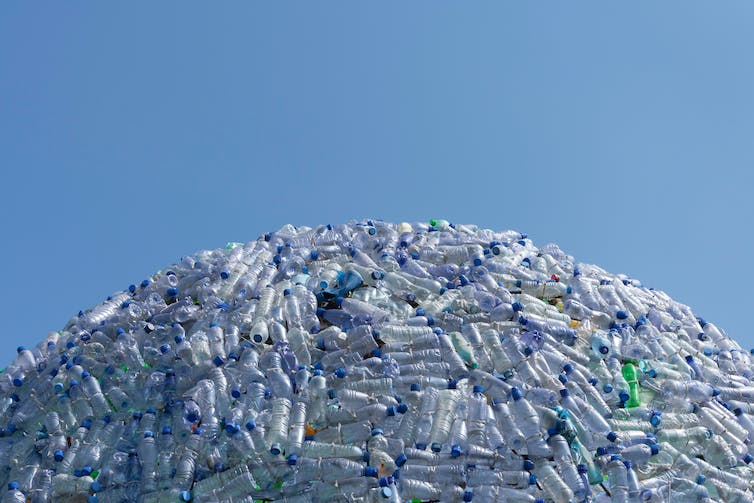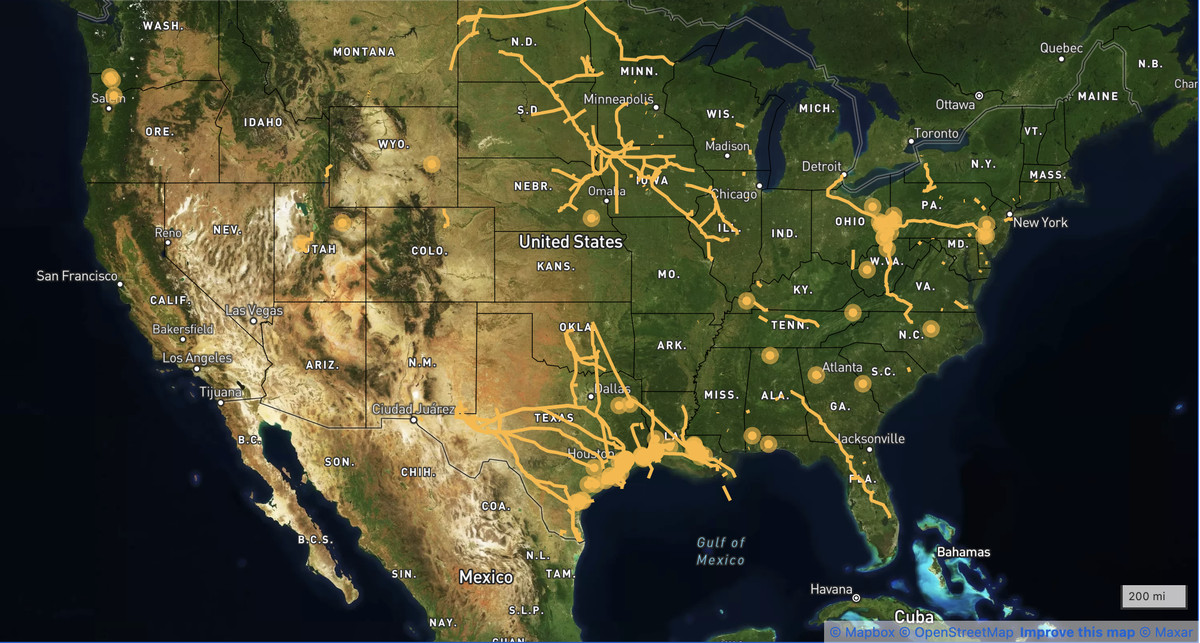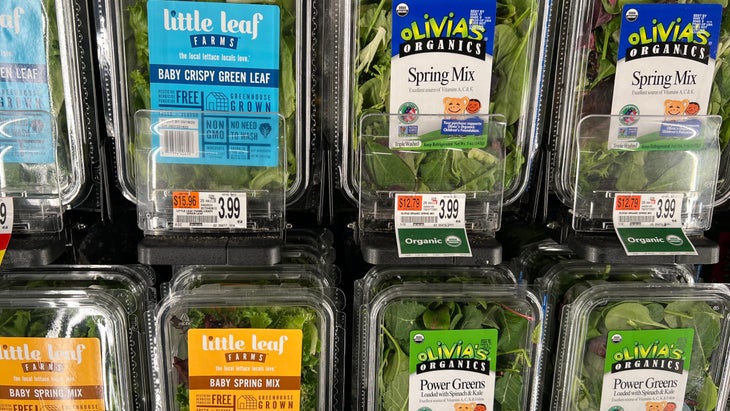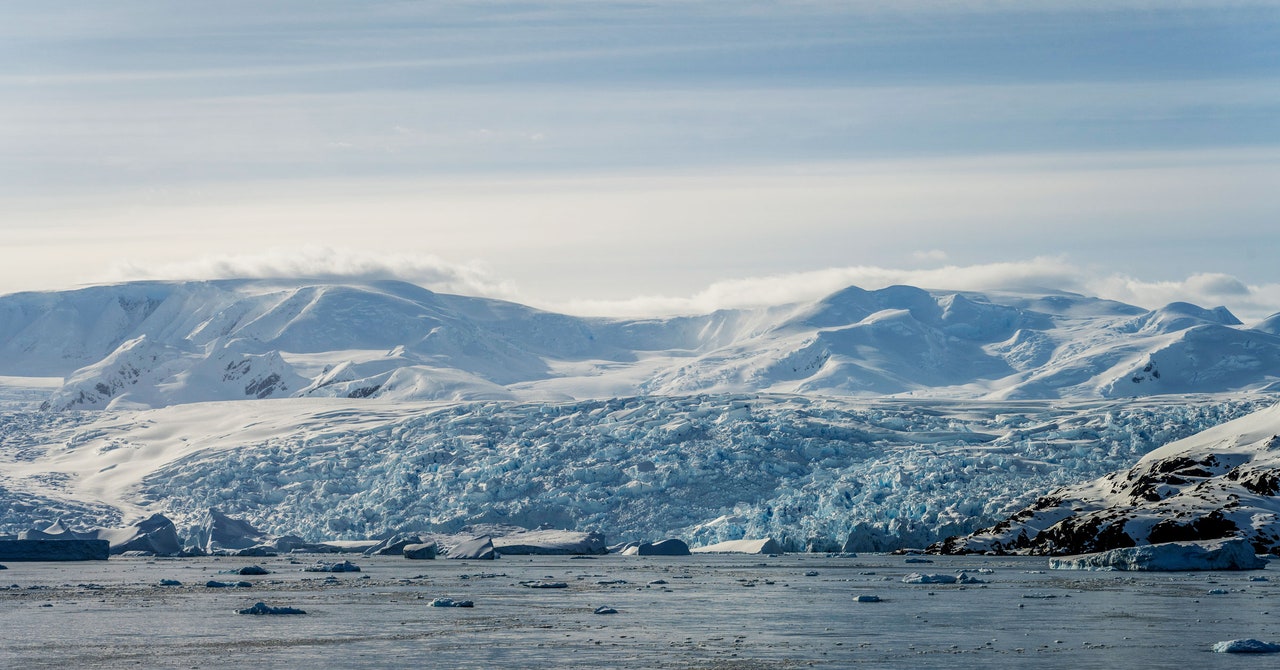THE TRAIN THAT DERAILED NEAR THE Ohio-Pennsylvania border in February 2023 was hauling mixed frozen vegetables. It was hauling malt liquor and semolina flour as well as chemicals used to make plastics. Chemicals like vinyl chloride monomer. Think of vinyl chloride like metaphorical railcars. When coupled end-on-end-on-end, they make up the long-haul train that is polyvinyl chloride (PVC) plastic, which the manifest suggests other cars on the actual ill-fated train were also carrying.
PVC is garden hoses. Is water pipes. Is shower curtains. Is siding and decking and flooring and toys. It is medical tubing and IV bags. And for the audiophiles among you, it is records, also called vinyl, even when sometimes pressed from polystyrene.
Vinyl chloride is a carcinogen. Burning vinyl chloride, like burning PVC plastic, creates the conditions to form even more potent chemicals called dioxins.
Multiple companies make PVC plastics. The PVC on the derailed train was carried in cars tagged ROIX, which in railroad speak means the cars were owned by a company called Shintech. Shintech—“the world’s largest producer of PVC”—is a wholly owned subsidiary of the Japanese firm, Shin-Etsu. In the U.S., it operates PVC plants in Freeport, Texas, and in Addis and Plaquemine, Louisiana.
Multiple companies make vinyl chloride. Norfolk Southern was carrying vinyl chloride in at least two cars traceable (the car ID, OCPX) to OxyVinyls, a division of OxyChem, which is a division of Occidental Petroleum. OxyVinyl’s vinyl chloride plant is in Deer Park, Texas, near the Houston Ship Channel, where a tornado ripped through earlier this year, knocking the plant temporarily offline.
Sometimes vinyl chloride and PVC factories cluster together, says Jim Vallette of Material Research, who has mapped the industry. For example, the companies Olin and Dow each supply vinyl chloride to Shintech’s neighboring Louisiana and Texas PVC plants, Vallette told me.
Other times, the railroad is how vinyl chloride is ferried to distant PVC plants, and then how finished PVC gets to its molders and fabricators.
IT IS UNCLEAR WHAT EXACT ROUTE the East Palestine train was traveling.
Chemical engineers, like train engineers, also speak of routes—the different pathways by which hydrocarbons can be coaxed toward the same destination.
There are multiple routes to making vinyl chloride.
All routes require chlorine.
Chlorine is bleach. Is white linens and white paper. Is disinfectant. Is the WWI-era war gas racing across the fields at Ypres before sinking down into the trenches and the lungs of unsuspecting soldiers.
No other industry uses more chlorine than PVC.
Chlorine is made from brine, which is to say salt, from which the chlorine must be split.
PVC is garden hoses. Is water pipes. Is shower curtains. Is siding and decking and flooring and toys. It is medical tubing and IV bags.
Historically, mercury figured prominently in this process.
Then asbestos.
Now the chlorine industry is pivoting toward using membranes manufactured from a chemical in the per- and polyfluoroalkyl substances (PFAS) family. PFAS is a group of at least 12,000 substances; the better studied of the group have been associated with a number of health effects, including cancers.
Asbestos is a carcinogen with its own signature cancer: mesothelioma.
Mercury is a heavy metal and, in the form of methylmercury, it is teratogenic (meaning it causes birth defects, notably on the developing brain and nervous system, my colleague at the Science and Environmental Health Network, Dr. Ted Schettler, reminded me). It is also a neurotoxicant and a global pollutant, so much so that its industrial use falls under a United Nations treaty: the Minamata Convention on Mercury.
The convention is named for a town and a bay on an island in the south of Japan.
It, too, has a signature disease—Minamata disease—though some who live with it have stated they would rather it be called what it is, which is severe industrial methylmercury poisoning.
The community of Minamata is more readily associated with mercury than with what the mercury was used to make, which are (among other endpoints) the chemicals used to make vinyl chloride and vinyl.
One hundred and forty nations convened in Japan in 2013 to adopt the Minamata Convention. Fifty nations had to sign for it to go into effect.
Japan didn’t ratify the convention until February 2016.
The East Palestine train derailment followed seven years later. Almost to the day.
I haven’t yet explained the different routes to vinyl chloride.
Early process patents were filed in 1912, writes the late historian Morris Kaufman, who began studying the history of PVC production at Imperial College London in the 1960s. German attempts to scale production didn’t yield a commercially viable product, so thirteen years later, the patents were allowed to lapse. A handful of companies picked up the research and development, making PVC’s origins international, diffuse, and difficult to neatly trace, said Kaufman.
In the U.S., Union Carbide, since bought by Dow (which merged with DuPont, reshuffled itself, and reemerged as “the new” Dow), began producing vinyl chloride in 1929 at a petrochemical complex—at the time something entirely new under the sun—along the Kanawha River, a tributary of the Ohio, which is a tributary of the Mississippi, which empties into the Gulf of Mexico.
PVC production commenced the following year in 1930, though it took a while for the plastic to catch on. Union Carbide set up along the Kanawha to take advantage of Appalachian natural gas, which the company had been a front-runner in exploiting. There was already a WWI-era chlorine plant next door.
Scientific research on vinyl chloride toxicity followed immediately thereafter, with papers appearing in the literature in the 1930s, too.
Another route begins from petroleum, which historically is how vinyl chloride has been made along the U.S. Gulf Coast.
A third route to vinyl chloride instead starts from coal.
The East Palestine disaster makes plain just how many communities are enveloped by plastics and have experienced both routine releases and environmental disasters linked to its production.
BEGINNING IN 1932, THIS IS HOW THE COMPANY that is now Japan’s Chisso Corporation opted to make vinyl chloride at Minamata. The company made carbide from the limestone found just north of town and the coalfields of northern Kyushu. From carbide to acetylene, and acetylene via a mercury catalyst to acetaldehyde, and onward to vinyl chloride and also, in a separate process, to a plasticizer called dioctyl phthalate (DOP for short), which also is used to soften PVC as well as other plastics.
The company also began routing its mercury-laden wastes into Minamata Bay that same year.
The mercury poisoned the water, which poisoned the fish, which poisoned the fisherfolk and their families who ate it. The last in line to be poisoned were the babies born from wombs poisoned with mercury.
“I had a vision of myself trying to swallow Japanese capitalism,” writes Michiko Ishimure, a writer from Minamata often compared to Rachel Carson.
Since the 1960s, she published—to much acclaim—genre-spanning “nonfictional novels” about the disaster. The first volume she titled Kugai jōdo (Paradise in the Sea of Sorrow). For decades, she advocated for the people of Minamata, though “year after year withered and fell off neatly,” she wrote, “like dead leaves or the brain cells of the victims of mercury poisoning.”
The witnessing, the writing, wore on her: all “these highly significant historical moments stuck in my throat.” It is suspected Ishimure suffered nerve damage from mercury as well.
Though officials recognized the first cases of Minamata disease in 1956, it wasn’t until 1968 that the Japanese government went on the record, admitting “that the cause for the disease was the methylmercury from the Chisso factory,” said Timothy George, professor emeritus of history at the University of Rhode Island and author of the book, Minamata: Pollution and the Struggle for Democracy in Postwar Japan.
Chisso already had ceased using mercury in their acetaldehyde process earlier that year.
“The company itself never officially acknowledged responsibility until it lost, in 1973, a lawsuit brought by the patients that ordered it to pay the largest settlement in Japanese legal history up to that time,” he added.
Other court cases followed.
As did, eventually, the Minamata Convention, which includes provisions to phase out the global use of mercury in chlorine, vinyl chloride, and acetaldehyde production.
Read more from Rebecca about our plastic legacy here.
“Incredibly,” says Vallette, “the mercury-acetylene route is still used (and expanding) in the Uyghur region” of northwestern China, where PVC plastics are made using the forced labor of the Uyghur people, many of whom are Muslim.
The U.S. passed the Uyghur Forced Labor Prevention Act and now U.S. Customs and Border Protection is banning the import of vinyl flooring from plastics made at these factories.
Still, they “are probably the most polluting plastics plants in the world,” he says. “The PVC plants [there] release more than 50 million tons of carbon dioxide per year, and are continuing to use and release massive amounts of mercury.”
Despite the Minamata Convention.
Says Vallette: these PVC plants “deserve a lot more attention.”
IN 2022, THE UNITED NATIONS GATHERED the global community, this time in Nairobi, Kenya, where overwhelming international support began negotiations toward a legally binding treaty on plastic pollution. The Minamata Convention was held up as a model.
Negotiations opened last fall in Uruguay. They will convene again in Paris this May.
At issue is whether nations will adopt measures to address plastics’ upstream toxic use (in addition to the accumulation of downstream waste).
Plastics experts—myself among them—have called for the treaty to cap production of nonessential plastics; to uphold human rights, including the right to a safe work and home environment; and to push the industry toward safer, more transparent, and less chemically complicated production. Meaning: what to do about mercury, asbestos, PFAS, and the thousands of other already known toxics used in plastics production, and also what to do about monomers like vinyl chloride and plastics like PVC and incidental byproducts like dioxins ought to be on the table.
But the dialogue more often focuses on plastics as a waste problem. If the treaty adopts this narrowed understanding about why so many plastics are problematic, then what has happened in Minamata or East Palestine, then what is happening in China and plastics corridors the world over, won’t seem relevant to a broad instrument that also could be designed to prevent future disasters, future long emergencies in communities living along plastics’ production, transport, and handling routes.
Plastics is a system held up by toxics. By chemicals exemplified by vinyl chloride monomer. As well as by processes that make the intermediates that make the monomers that make the plastics. That system is laid bare when trains linking nodes in plastics’ vast petrochemical network ignite or are, as also happened in Ohio, intentionally burned.
The East Palestine disaster makes plain just how many communities are enveloped by plastics and have experienced both routine releases and environmental disasters linked to its production. When it comes to environmental history, says George, “there is no such thing as the history of just one little place. Every place is connected to every other.”
Regardless of what route the train arrived in East Palestine, in a way it had passed through all the places where vinyl chloride ever has shaped lives and livelihoods. Places I haven’t yet mentioned like, Illiopolis, Illinois, where a PVC plant exploded. Or plants across Italy or in Louisville, Kentucky, where vinyl workers died from angiosarcoma. And in Belgium or Romania, where those who’d climbed down into the vats to clean them were forced into early retirement with fingers too disfigured to function by the rare bone-reabsorbing disease acroosteolysis. Places like Morrisonville and Reveilletown and Mossville, Louisiana, predominantly Black communities, polluted, but ultimately displaced by vinyl production despite communities organizing to protect them.
Places like Minamata.
Read Sandra Steingraber’s account of another PVC disaster here.
“CAN MINAMATA EVER TRULY BE OVER?” writes George. “So many ‘final and complete’ solutions have all turned out to be so incomplete.”
The documentary filmmaker Kazuo Hara says that for the people of Minamata, “the story is far from over.” His documentary, Minamata Mandala, released in 2020, took well over a decade to film. It centers on the story of the people of Minamata, some of whom continue to travel around the globe as kataribe, storytellers. The film is six hours long.
Also in 2020, a major motion picture, called Minamata and based more or less on historical events, premiered in Berlin. It stars Johnny Depp as U.S. photojournalist W. Eugene Smith, who in the 1970s, at the behest of the Minamata community, and alongside Aileen Smith (portrayed by Minami), made pictures for Life magazine to help them make their case. The film’s 2022 U.S. release, however, was overshadowed by Depp’s involvement in a high-profile case of his own. To the detriment of the people living out the long legacy of mercury—and vinyls—in Minamata and beyond.
While searching for the details about Chisso’s production methods, I stumbled on news of the film, and also of its soundtrack, written by the celebrated Japanese composer Ryuichi Sakamoto, who has won two Golden Globes, an Oscar, and a Grammy, and passed away from cancer while I was working on this essay.
I’ve been listening to the Minamata soundtrack on repeat as I write; the writing taking on (uncharacteristically for me) a steadiness, like wheels on rails, paragraph after paragraph. It is somber, profound, transporting, a reflection of the scale of the industrial disaster and decades of care work and community activism that also is Minamata.
Recently, the soundtrack was released, I’m not kidding, on vinyl.
The author wishes to thank Timothy George, Bethanie Carney Almroth, Patricia Villarrubia-Gomez, Jim Vallette, and Ted Schettler for their expert research and advice in preparing/reviewing this essay. Additional bibliographic resources have been posted to the author’s website: www.rebecca-altman.com.


